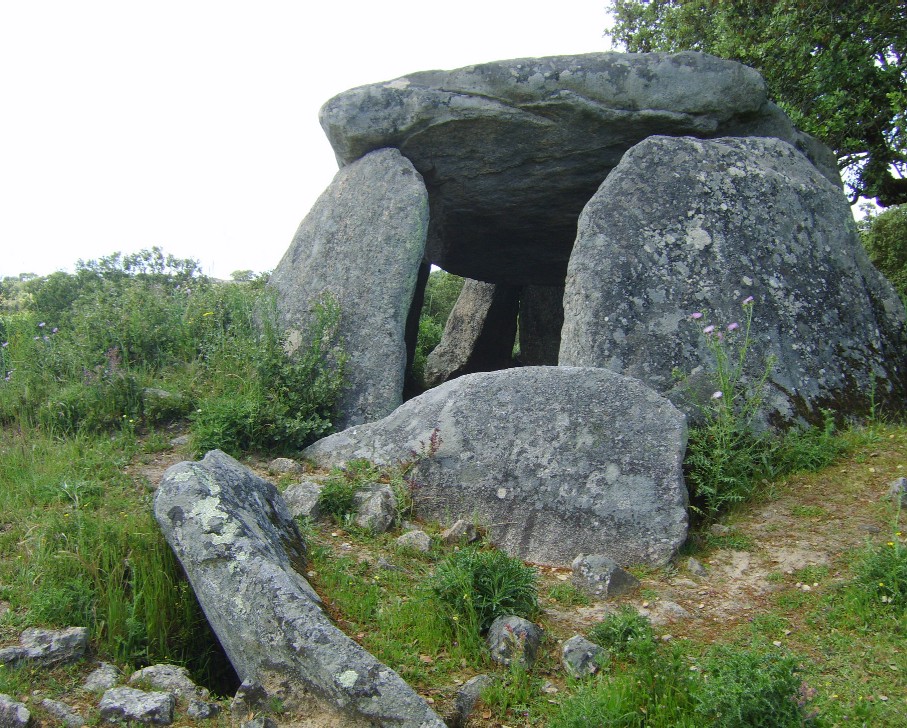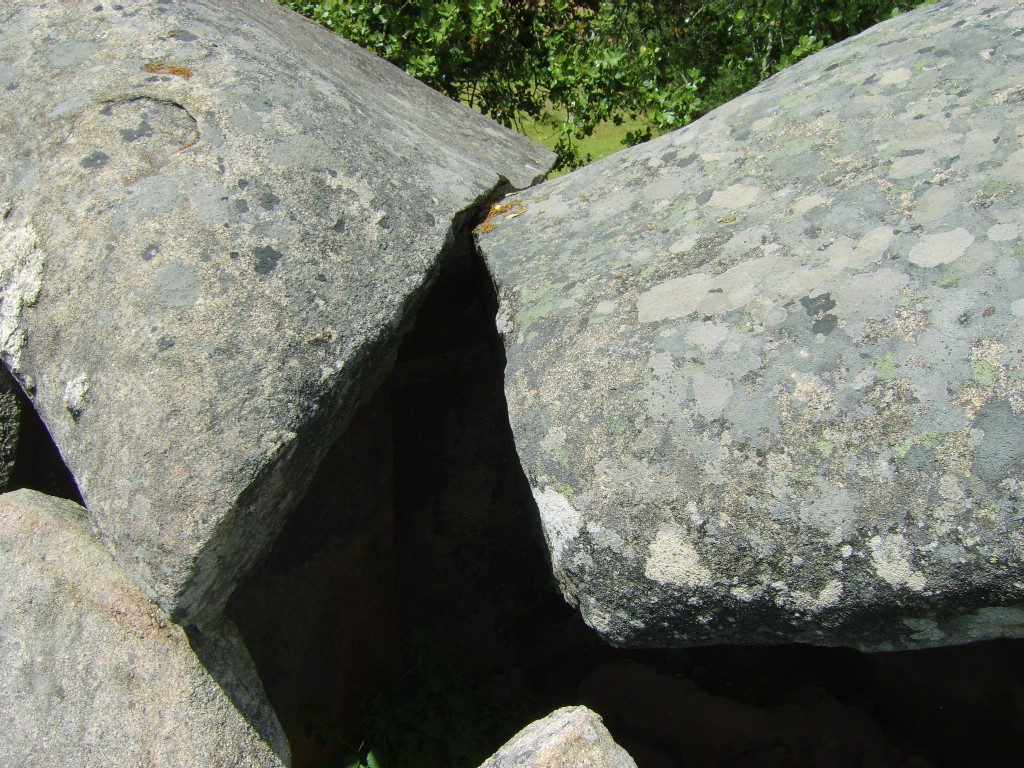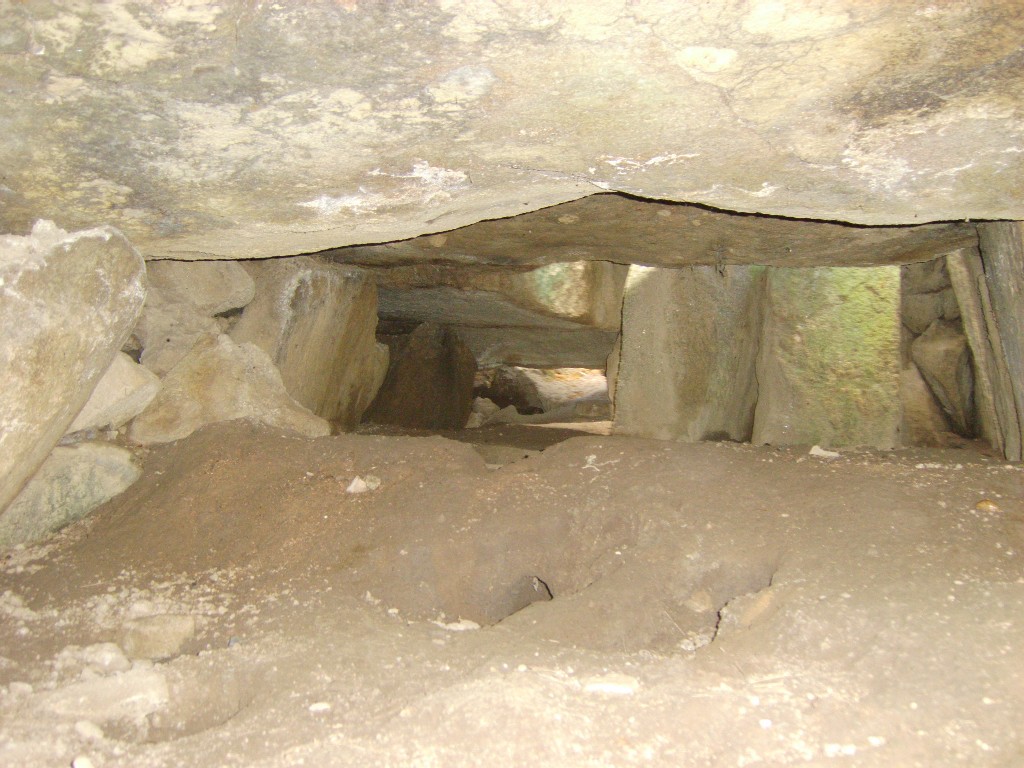While
the
internal design of this structure is reminiscent of other Alentejo
structures mounds such as those at
Tapad�o and
Zambujeira,
Zambujeiro was strictly a passage-mound, being originally completely
covered, while this and Tapadao share the fact that they were probably always
only half covered.
Strictly, this is neither a dolmen nor is it
two dolmens. It is a
chamber built with 8-upright stones, 'capped in the style of a dolmen',
but built to include a passage, then partially covered over with a mound. The result
is a passage-mound with protruding dolmen.


The capstone is also broken in half, possibly due to lightning
strike.
It is important to note that the hole at the top is only
there because the stone that was originally there has slipped and broken, as
the picture above shows.
Built near a stream, but with
a poor view of just over a mile in all directions. The reason for placing
this mound here remains a mystery. In any case, the site has a fantastic
atmosphere and is worth the extra effort to get there.

The large size of the mound
becomes apparent from behind the structure.
The 8-uprights that compose
the walls of the central chamber are exposed to a height of around 3m, but
are likely to be at least another metre longer in order to reach ground-level beneath
the soil-filled chamber.

The inside is filled with soil and a rabbit warren.
Orientation - The passage
is orientated at approximately 110�,
similar to
Tapadao,
and several other Portuguese Dolmens. It is suggested that this orientation
may have been towards the spring moon, or the rising of Pleiades (the seven sisters), a
common celestial orientation, as it was considered the beginning of the
agricultural year in several ancient cultures.
There is apparently a second, smaller and
destroyed, dolmen nearby - compounding the idea that Portuguese megaliths
often appear to be found in pairs (although I was unable to find it).
Gallery of images.
(List of Prehistoric Portuguese sites)
(Portugal Homepage)